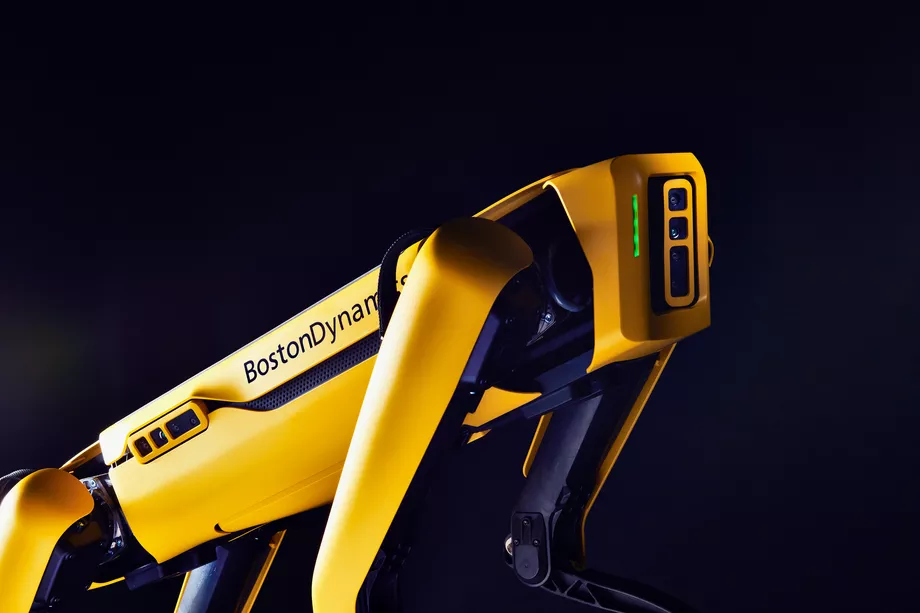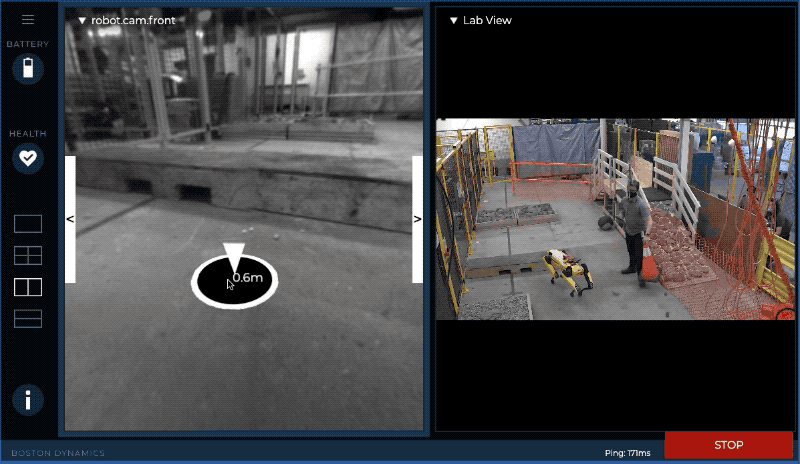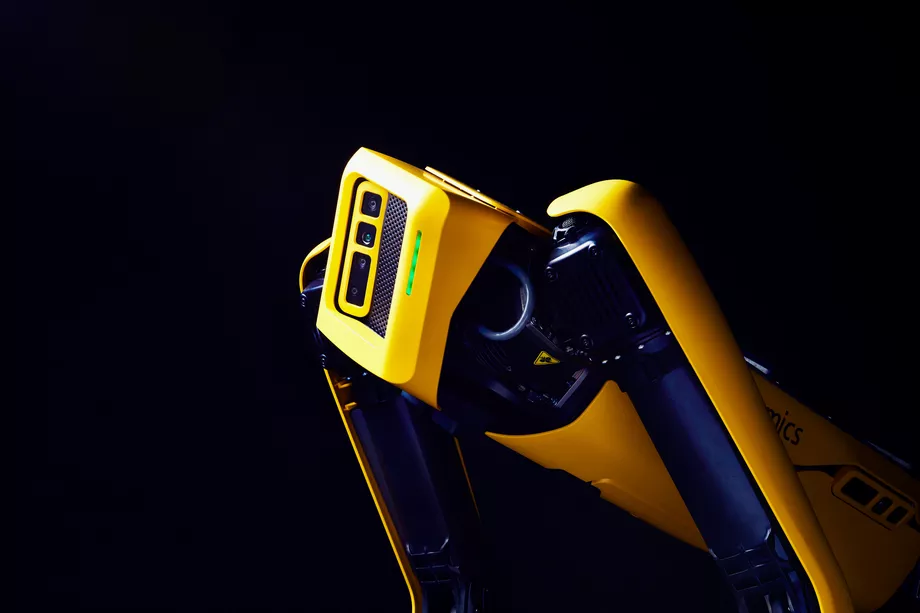Boston Dynamics will now sell any business its own Spot robot for $74,500
- The Tech Platform

- Jun 17, 2020
- 5 min read
Yours for the price of a Tesla Model S
Image: Boston Dynamics
Robot-maker Boston Dynamics has finally put its four-legged robot Spot on general sale. After years of development, the company began leasing the machine to businesses last year, and, as of today, is now letting any US firm buy their very own Spot for $74,500.
It’s a hefty price tag, equal to the base price for a luxury Tesla Model S. But Boston Dynamics says, for that money, you’re getting the most advanced mobile robot in the world, able to go pretty much anywhere a human can (as long as there are no ladders involved).
Although Spot is certainly nimble, its workload is mostly limited right now to surveying and data collection. Trial deployments have seen Spot create 3D maps of construction sites and hunt for machine faults in offshore oil rigs. Less routine tests include helping hospitals triage COVID-19 patients and, somewhat controversially, working with a police bomb squad. Boston Dynamics’ pitch is that Spot is a multipurpose “mobility platform” that can be customized with different sensors and programmed to perform patrols and inspections.
“We mostly sell the robot to industrial and commercial customers who have a sensor they want to take somewhere they don’t want a person to go,” Boston Dynamics’ lead robotics engineer, Zack Jackowski, told The Verge last week. “Usually because it’s dangerous or because they need to do it so often that it would drive someone mad. Like carrying a camera around a factory 40 times a day and taking the same pictures each time.”
Spot can be fitted with a range of custom payloads, including sensors and scanners. GIF: Boston Dynamics
The company says it will continue upgrading Spot as it gets feedback from customers but that the robot is finally ready for general sale. This is partly due to a recent software update coded by Boston Dynamics engineers working from home with their own Spot units. Spot 2.0, as the update is called, allows for more advanced autonomy and navigation features.
CUSTOMERS WILL BE ABLE TO TEST-DRIVE SPOT REMOTELY
One feature that Boston Dynamics is currently working on is remote teleoperation. A demo version of this feature will be available to potential Spot customers who will be able to take a unit for a test drive in a robot assault course in the company’s headquarters.
This will let customers try before they buy at a time when travel is restricted by the pandemic, Boston Dynamics’ vice president of business development, Michael Perry, told The Verge. “Some of the customers we’re speaking to are in the ‘shut up and take my money’ mode,” says Perry. “But others say, ‘I’m interested in Spot, but I want to come to your lab and drive a robot or for you to come visit me.’” Teleoperation helps solve that problem.
I was able to try the teleoperation feature myself, driving a Spot unit around the company’s Boston testing range from my home, some 4,000 miles away in London. After logging in to a web app on Boston Dynamics’ site, I was able to set up my camera view, choosing from external cameras in the company’s lab, Spot’s own cameras, and a 3D map of its surroundings generated by the machine itself, and then move with the WASD keys.
Tele-operating Spot is simple, though a little laggy. GIF: The Verge
The experience was definitely laggy, with Spot responding to my commands with a few seconds’ delay, but the interface was simple and clear.
Navigating with Spot, you soon get an idea of how this robot can move. You just point it where you want to go, and it will automatically navigate over and around any obstacles in its way (while also stopping itself from walking into walls).
And, yes, Spot can also right itself if it happens to tip over. Just hit a button, and it will roll to one side, then push itself up with its legs and be ready to start walking again.
Boston Dynamics says it will be releasing a similar teleoperation program to customers this year, and that another update in the works for 2020 is a head-mounted robot arm, which will open a range of new applications. Spot will then be able to manipulate its surroundings as well as collect data, using the arm to open doors, turn valves, and hit switches.
What about potential misuse, though? Ever since Boston Dynamics started uploading videos of its robots online, there have been worries (some tongue in cheek, others serious) that its machines will be used for malicious purposes. Although Spot is no more deadly than, say, a wheeled delivery robot, something about its movements unnerve people.
Perry says that Boston Dynamics will enforce a code of use for the robot: no weapon attachments and no use cases that can “harm or intimidate” people. But like any firm selling its wares online, it has no real way of stopping malicious uses once the robot is out of its hands. This is true of many technologies, of course — from drones that are turned into remote bombs to 3D printers used to make untraceable firearms for criminals.
SPOT’S CODE OF USE FORBIDS USING THE ROBOT TO “HARM OR INTIMIDATE”
“If there’s a harmful use, then the license would be invalidated, and the customer wouldn’t be able to use the robot,” says Perry. “But obviously, there’s not a lot that we can do ahead of time beyond validating that the purchase is valid, and that the person buying the robot is not on the Department of Commerce watch list or anything along those lines.”
Perry says the company hasn’t ruled out selling Spot to security firms, for example, or further law enforcement trials. “So long as the robot’s not being used to harm or intimidate people,” he says. But he adds that he doesn’t expect it to be widely used in security. It’s an expensive machine, after all, that a determined opponent can quickly incapacitate. “It is a 30-kilogram robot that can easily be knocked over,” he says.
Spot now looks and feels like a polished commercial product. Photo: Boston Dynamics
Although Spot is something of a celebrity in the robot world, it’s still very much a limited product. The company has leased around 150 units to customers to date, and it’s going to miss its target of producing 1,000 Spot robots this year due to the impact of the coronavirus. (It’ll hit the target Q1 2021, says Perry.) Customers will also be limited to buying two robots at a time, and larger orders will need to be discussed with Boston Dynamics.
“If you want to buy more than two robots, our team wants to talk to you,” says Perry. “Because we want to understand what you want to do with the robot.” He adds that peoples’ expectations don’t always match up with Spot’s “core competencies.”
“We get a lot of requests for stuff that is really, really exciting,” he says. “But a lot of the most interesting stuff from a business perspective are things that people would find boring, like enabling the robot to read analogue gauges in an industrial facility. That’s not something that will set the internet on fire, but it’s transformative for a lot of businesses.”
Source: Paper.li









Comments